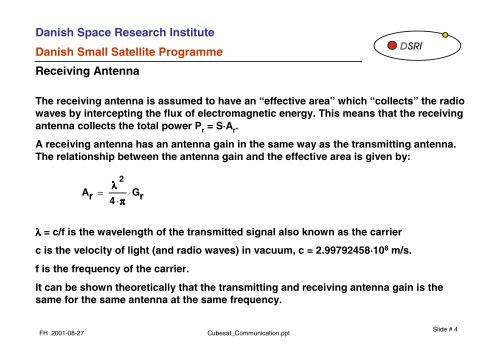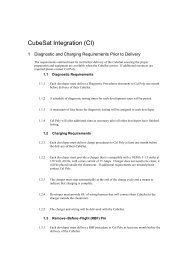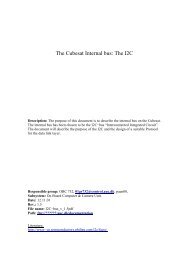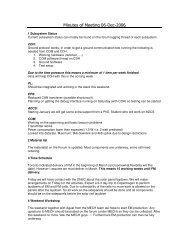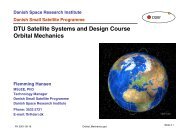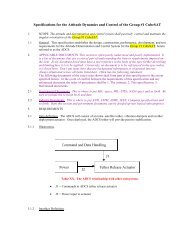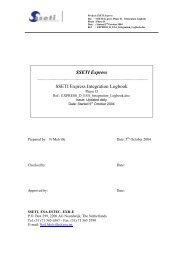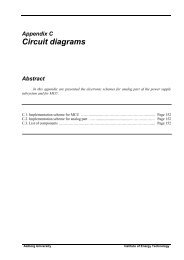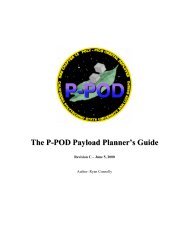DTU Satellite Systems and Design Course CubeSat Communication
DTU Satellite Systems and Design Course CubeSat Communication
DTU Satellite Systems and Design Course CubeSat Communication
You also want an ePaper? Increase the reach of your titles
YUMPU automatically turns print PDFs into web optimized ePapers that Google loves.
Danish Space Research Institute<br />
Danish Small <strong>Satellite</strong> Programme<br />
Receiving Antenna<br />
The receiving antenna is assumed to have an “effective area” which “collects” the radio<br />
waves by intercepting the flux of electromagnetic energy. This means that the receiving<br />
antenna collects the total power P r = S⋅A r .<br />
A receiving antenna has an antenna gain in the same way as the transmitting antenna.<br />
The relationship between the antenna gain <strong>and</strong> the effective area is given by:<br />
A r<br />
=<br />
λ 2<br />
4⋅ π<br />
G ⋅ r<br />
λ = c/f is the wavelength of the transmitted signal also known as the carrier<br />
c is the velocity of light (<strong>and</strong> radio waves) in vacuum, c = 2.99792458·10 8 m/s.<br />
f is the frequency of the carrier.<br />
It can be shown theoretically that the transmitting <strong>and</strong> receiving antenna gain is the<br />
same for the same antenna at the same frequency.<br />
FH 2001-08-27 Cubesat_<strong>Communication</strong>.ppt<br />
Slide # 4


